#first nations canadian
Text
Since it's disability pride month and yesterday was burn the American flag day, I just wanna give a shout out to all the native Americans like me who, despite wanting to, cannot keep their hair long because of bad sensory issues.
You are not less native than those who can grow their hair long.
Your ancestors love and understand why you cut your hair.
You are not required to follow traditions you cannot participate in due to your sensory issues.
Having short hair is not a "white thing" or " disrespectful towards the great spirit and our ancestors".
Your hair can look, feel and be as long or as short as you want and you are still just as beloved by your ancestors.
White people can rb but don't clown with info about tribes you had to google.
#mogai#mogai community#mogai pride#actually mogai#clover speaks#two spirit#2 spirit#2s#native#native american#native canadian#since we also have similar traditions#metis#indiginous american#indiginous canadian#first nations#first nations american#first nations canadian#inuit#cherokee#only because im cherokee and inuit so ye#btw this is about my autism#autism#sensory issues#short hair
318 notes
·
View notes
Text
"In a historic “first-of-its-kind” agreement the government of British Colombia has acknowledged the aboriginal ownership of 200 islands off the west coast of Canada.
The owners are the Haida nation, and rather than the Canadian government giving something to a First Nation, the agreement admits that the “Xhaaidlagha Gwaayaai” or the “islands at the end of world,” always belonged to them, a subtle yet powerful difference in the wording of First Nations negotiating.
BC Premier David Eby called the treaty “long overdue” and once signed, will clear the way for half a million hectares (1.3 million acres) of land to be managed by the Haida.
Postal service, shipping lanes, school and community services, private property rights, and local government jurisdiction, will all be unaffected by the agreement, which will essentially outline that the Haida decide what to do with the 200 or so islands and islets.
“We could be facing each other in a courtroom, we could have been fighting each other for years and years, but we chose a different path,” said Minister of Indigenous Relations of BC, Murray Rankin at the signing ceremony, who added that it took creativity and courage to “create a better world for our children.”
Indeed, making the agreement outside the courts of the formal treaty process reflects a vastly different way of negotiating than has been the norm for Canada.
“This agreement won’t only raise all boats here on Haida Gwaii – increase opportunity and prosperity for the Haida people and for the whole community and for the whole province – but it will also be an example and another way for nations – not just in British Columbia, but right across Canada – to have their title recognized,” said Eby.
In other words, by deciding this outside court, Eby and the province of BC hope to set a new standard for how such land title agreements are struck."
-via Good News Network, April 18, 2024
#canada#indigenous#first nations#haida#british columbia#canadian politics#land back#indigenous peoples#indigenous rights#indigenous land
13K notes
·
View notes
Text
Long considered extinct, pentl'ach has now been declared a living language and added to British Columbia's official list of First Nations languages.
The reclassification of pentl'ach (pronounced "PUNT-lutch") was the result of both linguistic and administrative work by the Qualicum First Nation on Vancouver Island's east coast, with support from the First Peoples' Cultural Council.
The Coast Salish language had been considered extinct because the last well known fluent speaker died in the 1940s.
But Mathew Andreatta, a Qualicum member and researcher with the pentl'ach revitalization project, said the language was never truly gone.
Andreatta called the reclassification "an affirmation of something that we've always known and that we've always felt."
He said the move is important because it is healing for his people, but also because it opens more doors to continue revitalizing the language.
Continue Reading.
Tagging: @politicsofcanada
#Indigenous#First Nations#pentl'ach#indigenous languages#cdnpoli#canada#canadian politics#Qualicum First Nation#Vancouver Island#british columbia
2K notes
·
View notes
Text
I know I don’t have a large following. I know this post will get lost in the sea of other posts. I know I don’t come on here often, and when I do I try to keep my page free from death and other serious topics. Yet, I think this is imperative to say, especially since I myself am of indigenous descent. I ask all of you to join me in solidarity.
Cole Brings Plenty, actor, model, and most importantly activist was found dead. He was assaulted in a club in Lawrence, Kansas. He was killed and his braids; a symbol of his heritage, of his Lakota decent, and a sacred symbol across many an indigenous nation, were forcibly cut.
I beg of thee and I plead with thee, spread the word. Do your part, however big or little, to bring light to this situation. Whether it be by reblogging this post or others alike, or by going out and making a stand. Do it.
Shed light on the situation. This goes beyond the death of one man. It is about the abuse and the destruction of natives and their communities. Of the killing of many an innocent soul. Of the brutalization of many First Nations.
We have seen time and time again, many indigenous people die by similar means. We need to bring light on the deaths of any and all indigenous individuals dead, missing or at risk. It is an epidemic, an assault, and a silent cleansing of many a nation.
Whether it be the estimated 6,000 dead at the hands of Canadian residential schools, the murdered and missing indigenous women and children, or the killing of an actor and activist, you cannot deny the sheer abhorrence of this problem. The problem of many Native American people dying, going missing and being abused, at an alarming rate. At a level unprecedented and unparalleled, at a level of which should not be kept silent.
Cole Brings Plenty, actor, model, activist.
Look at him and spread awareness for him and for many others befallen by the same fate.

Remember him. Remember all of the others. Let nobody else befall the same fate again.
#cole brings plenty#first nations#indigenous#indigenous americans#native american#Canadian residential schools#residential schools#tw death#mmiw#mmiwg2s#please join me in solidarity and spread this word as much as possible#i beg of you#colored text#long post
904 notes
·
View notes
Text

Bill Reid (Haida/Canadian, 1920-1998), Xhuwaji - Haida Grizzly Bear, 1990. Colour silkscreen, 21 1/2 x 21 1/2 in.
544 notes
·
View notes
Text
It's Orange Shirt Day in Canada! Here are some ways you can support survivors of residential schools today:
Learn about the harm done by residential schools, and the calls for justice (links contain discussions of child death and abuse)
Call your elected representatives and show up to city council meetings. Speak up in support of indigenous activists' causes.
Follow indigenous journalists and activists online.
Donate to organizations that help survivors:
The Indian Residential School Survivors Society offers counseling and other supports (24 hour crisis hotline: 1-(800)-721-0066)
The KUU-US Crisis Line Society (for adults: 250-723-4050; for minors: 250-723-2040)
The First Nations Child and Family Caring Society
(Feel free to add more!)
928 notes
·
View notes
Text
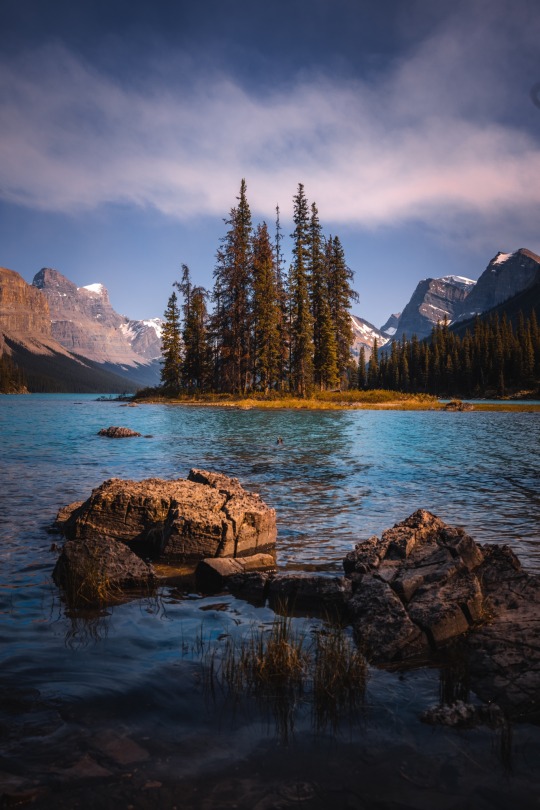
Spirit Island, Jasper National Park🇨🇦
#Spirit Island#Jasper#canadian national parks#aimeekb#Maligne Lake#myphotography#lesbians who hike#forest#hiking#nature#adventure#explore#Stoney First Nations#travel#mountains#jasper national park#canadian rockies
713 notes
·
View notes
Text
People declaring the Pope should excommunicate Joe Biden for genocide has me like??? Bro...what do you think the Catholic Church was built on...
#Pope Francis did call for a ceasefire and actually used the word ''cease'' even if he used waffly both-sides language#he's also been pretty progressive about recognizing and apologizing for the church's role#in the Canadian First Nation's and Rwandan genocides#but that's still bare minimum#and there was that whole deal with the Catholic Church helping save Jews in the Holocaust#but trying to help the people you helped victimize in the first place shouldn't be counted IMO#certainly doesn't erase centuries of Jewish persecution#xtianty#colonialism#Spanish colonialism#Portuguese colonialism#genocide#genocide Joe#free palestine#knee of huss
274 notes
·
View notes
Text
the fact that Neskantaga is still under a boil water advisory in 2024 is driving me insane.
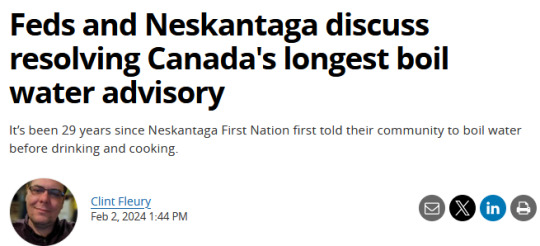
for context: Neskantaga First Nation is a small community in Ontario 436 km [270 miles] northeast of Thunder Bay and 180 km [111 miles] northeast of Pickle Lake. They have been under a boil water advisory since February 1995 - nearly 30 goddamned years.
Progress on a new water treatment plant has been ongoing. Neskantaga First Nation's original water treatment plant was built in 1993, but the journey for a new one has undergone numerous issues involving the government and contractors, as well as shoddy construction and hazardous spills.
Construction is still listed as underway with no ETA on the advisory being lifted.

The Canadian Government perpetually drops the ball when it comes to safe water on reserves. In December 2023 the government introduced Bill C-61. It addresses clean drinking water across all First Nations communities, but Chief Chris Moonias of Neskantaga First Nation, the nation with the longest boil water advisory in the entirety of Canada, wasn't even consulted. The bill itself has also been met with much skepticism and criticism due to its vague wording, and rightfully so.
That said, despite the hells of the government there is some positive to be had. 144 long-term drinking water advisories have been lifted between November 2015 and January 2024.
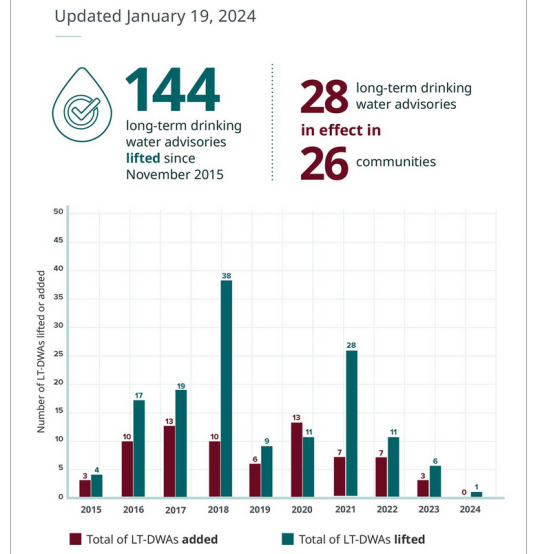
I like to hope the 2021 report from the Auditor General regarding Indigenous Services Canada and its shortcomings will give them insight on how to better optimize their management going forward. So far 2022 and 2023 has continued the downward trend with fewer and fewer long-term water advisories, but it's important to know if these completed projects are successful in guaranteeing clean water to these communities for the long-term future. Is ISC actually following up with proper support.
On February 1, 2024 Indigenous Services Canada posted a statement that the Minister of Indigenous Services has met with Neskantaga First Nation Chief Christopher Moonias to discuss resolving the water advisory and create a 12-point action plan. I know it's asking a Lot within 11 months, but I really really hope the Neskantaga community won't see their long-term water advisory hit 30 years.
In the meantime, Neskantaga First Nation receives donations through Gathering of Rivers for Community Care. If you're able, please consider donating.
thanks
#Neskantaga First Nation#long post#i've been watching this trainwreck closely for the last who knows how long#genuinely i fucking hope ISC can get their shit together and get this community some clean fucking water#it's unacceptable that it's gone on this long#canada#canadian politics and issues
219 notes
·
View notes
Text
For #Woodensday:

Kwakwaka'wakw artist
Baleen Whale Mask, 19th century
Alert Bay, Cormorant Island, British Columbia, Canada
Cedarwood, pigment, hide, cotton cord, metal nails
From Brooklyn Museum’s “Climate in Crisis: Environmental Change in the Indigenous Americas” exhibition
#animals in art#whale#mask#Brooklyn Museum#museum visit#exhibition#Woodensday#woodwork#19th century art#First Nations art#Indigenous art#Kwakwaka'wakw#Canadian art
379 notes
·
View notes
Photo
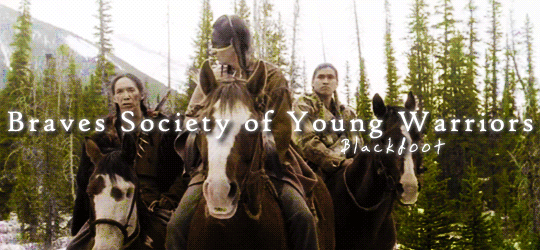

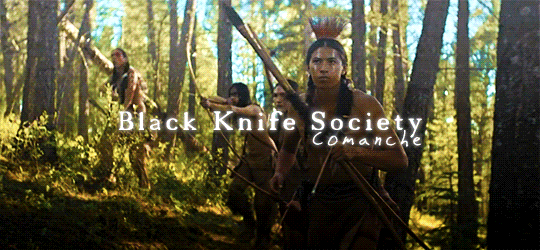

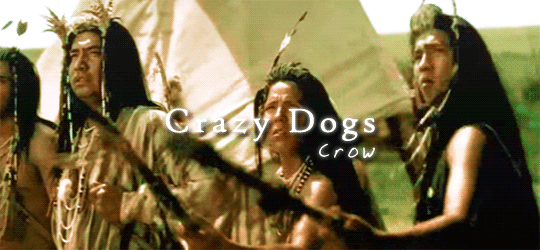
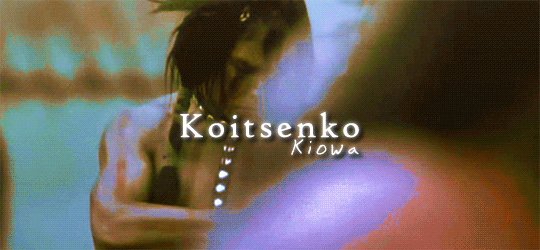


[image description: gifs stacked vertically of Native American warriors of various tribes, in traditional attire and in the fashion of their tribe. Text overlays on top of each gif, labeled, in order: “Brave’s society of Young Warriors, Blackfoot.”, “Women Warrior’s Society, Cheyenne.”, “Black Knife Society, Comanche.”, “Okichitaw, Cree.”, “Crazy Dogs, Crow.”, “Koitsenko, Kiowa.”, “Kit Fox Society, Lakota.”, “Iruska, Pawnee.”. end image description.]
Plains Native American Warrior Societies
(not an exhaustive list)
#historyedit#history#native american#plains native#plains indian#ndn#indigenous#native american history#first nations history#american history#canadian history#justin's edits
418 notes
·
View notes
Photo
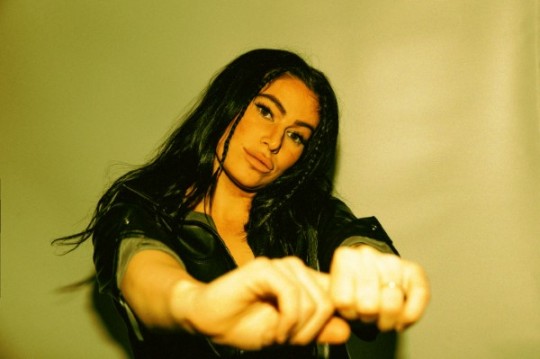
Shawnee Kish
Gender: Two Spirit (she/her)
Sexuality: Lesbian
DOB: N/A
Ethnicity: First Nation (Mohawk)
Nationality: Canadian
Occupation: Singer, songwriter
#Shawnee Kish#qpoc#bipoc#lgbtq#sapphic#two spirit#third gender#lesbian#first nation#native#native american#poc#canadian#singer#songwriter#popular#popular post
183 notes
·
View notes
Text
For years, the people of the Kitasoo/Xai’xais First Nation watched over their waters and waited. They had spent nearly two decades working with Canada’s federal government to negotiate protections for Kitasu Bay, an area off the coast of British Columbia that was vulnerable to overfishing.
But the discussions never seemed to go anywhere. First, they broke down over pushback from the fishing industry, then over a planned oil tanker route directly through Kitasoo/Xai’xais waters.
“We were getting really frustrated with the federal government. They kept jumping onboard and then pulling out,” says Douglas Neasloss, the chief councillor and resource stewardship director of the Kitasoo/Xai’xais First Nation. “Meanwhile, we’d been involved in marine planning for 20 years – and we still had no protected areas.”
Instead, the nation watched as commercial overfishing decimated the fish populations its people had relied on for thousands of years.
Nestled on the west coast of Swindle Island, approximately 500km north of Vancouver, Kitasu Bay is home to a rich array of marine life: urchins and abalone populate the intertidal pools, salmon swim in the streams and halibut take shelter in the deep waters. In March, herring return to spawn in the eelgrass meadows and kelp forests, nourishing humpback whales, eagles, wolves and bears.
“Kitasu Bay is the most important area for the community – that’s where we get all of our food,” Neasloss says. “It’s one of the last areas where you still get a decent spawn of herring.”
So in December 2021, when the Department of Fisheries and Oceans withdrew from discussions once again, the nation decided to act. “My community basically said, ‘We’re tired of waiting. Let’s take it upon ourselves to do something about it,’” Neasloss says.
What they did was unilaterally declare the creation of a new marine protected area (MPA). In June 2022, the nation set aside 33.5 sq km near Laredo Sound as the new Gitdisdzu Lugyeks (Kitasu Bay) MPA – closing the waters of the bay to commercial and sport fishing.
It is a largely unprecedented move. While other marine protected areas in Canada fall under the protection of the federal government through the Oceans Act, Kitasu Bay is the first to be declared under Indigenous law, under the jurisdiction and authority of the Kitasoo/Xai’xais First Nation.

Pictured: "In some ways, I hope someone challenges us" … the Kitasoo/Xai’xais stewardship authority.
Although they did not wait for government approval, the Kitasoo did consult extensively: the declaration was accompanied by a draft management plan, finalised in October after three months of consultation with industry and community stakeholders. But the government did not provide feedback during that period, according to Neasloss, beyond an acknowledgment that it had received the plan...
Approximately 95% of British Columbia is unceded: most First Nations in the province of British Columbia never signed treaties giving up ownership of their lands and waters to the crown. This puts them in a unique position to assert their rights and title, according to Neasloss, who hopes other First Nations will be inspired to take a similarly proactive approach to conservation...
Collaboration remains the goal, and Neasloss points to a landmark agreement between the Haida nation and the government in 1988 to partner in conserving the Gwaii Haanas archipelago, despite both parties asserting their sovereignty over it. A similar deal was made in 2010 for the region’s 3,400 sq km Gwaii Haanas national marine conservation area.
“They found a way to work together, which is pretty exciting,” says Neasloss. “And I think there may be more Indigenous protected areas that are overlaid with something else.”
-via The Guardian, 5/3/23
#indigenous#indigenous issues#indigenous sovereignty#canada#british columbia#land back#first nations#tribal sovereignty#pacific northwest#marine protected area#conservation#sustainability#overfishing#marine science#canadian government#kitasoo-xai'xais#direct action#good news#hope
11K notes
·
View notes
Text
On the Sioux Valley Dakota Nation west of Brandon, Man., schoolchildren are throwing pumpkins into a bison pen, a ceremony and sign of respect to an animal that has deep spiritual significance for Indigenous culture and identity.
Community leaders are also educating a new generation about how the bison, known in these parts as buffalo, has important implications for the future of the Prairies – rehabilitating natural grasslands and conserving water in a time of climate change.
"The significance of the buffalo goes back hundreds of years. These animals have saved our lives," said Anthony Tacan, a band councillor whose family is the keeper of this herd.
"They provided food and weapons out of the bones, tools, the hides for clothing, the teepees. It did everything for us. So going forward, we decided it's our turn to give back. It's our turn to look after them."
Continue Reading
#cdnpoli#canadian politics#canada#canadian news#sioux valley dakota nation#first nations#indigenous#american buffalo#american bison#bison#ecology#ecosystem restoration#manitoba
2K notes
·
View notes
Photo
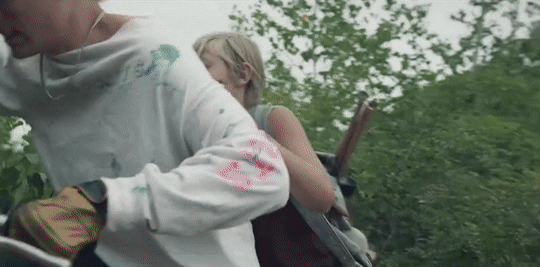



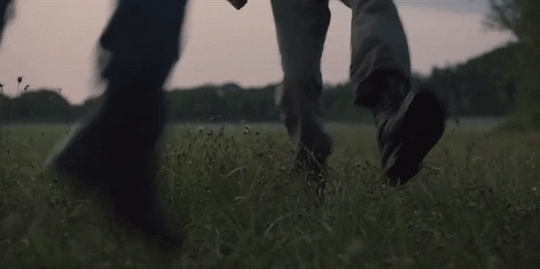
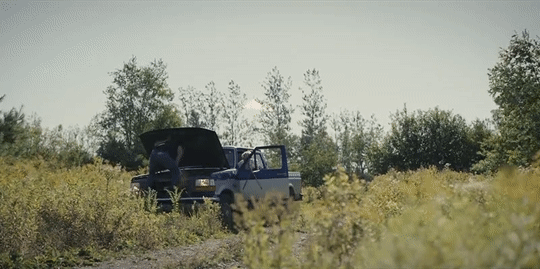

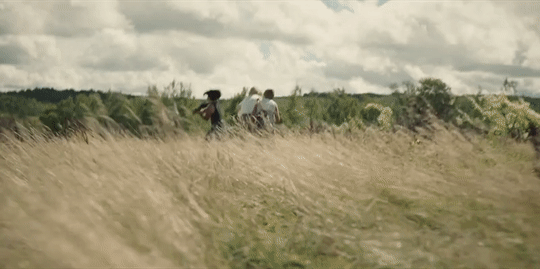
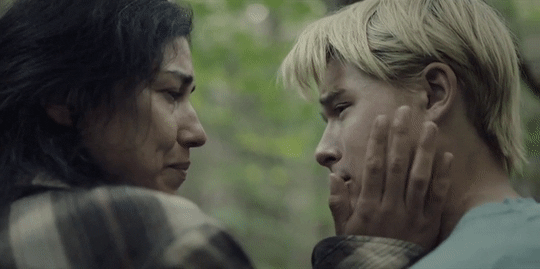
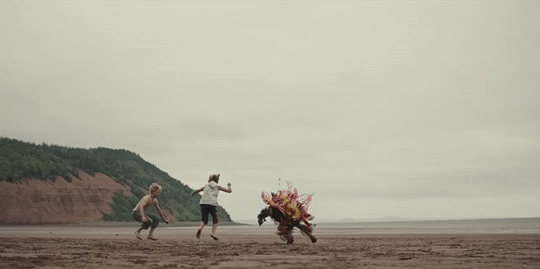
WILDHOOD (2021)
dir. Bretten Hannam
In a rural East Coast trailer park, Link lives with his toxic father and younger half brother, Travis. When Link discovers his mother could still be alive, the siblings embark on a quest for a better life. On the road, they meet Pasmay, an openly two-spirit pow wow dancer drawn to Link. As the boys journey across Mi'kma'ki, Link finds community, identity, and love in the land where he belongs.
(link in title)
#lgbt cinema#gay cinema#wildhood#wildhood 2021#canadian cinema#first nations#lgbt#gay#two-spirit#mi'kmag#canada#lgbt movie#gay movies#canadian movies#lgbt film#gay film#canadian film#lgbt media#gay media#queer cinema#north american cinema#bretten hannam#phillip lewitski#joshua odjick#michael greyeyes#2021#2020s#2020s movies#2020s cinema#2020s films
284 notes
·
View notes
Text

Melaw Nakehk’o, “Free Palestine” (2023), traditionally smoked moose and caribou hide, glass beads, embroidery thread, sinew
“We really need to take a look at silencing as being a core failure of the decolonization and Indigenization platforms these institutions claim to be incorporating into their spaces,” Aylan Couchie said, adding that communities “need the freedom to speak to settler colonialism everywhere, including in Palestine.” [x]
#chromatic voice#melaw nakehk'o#first nations#free palestine#solidarity#usermarmalade#canadian content#we all make art
56 notes
·
View notes